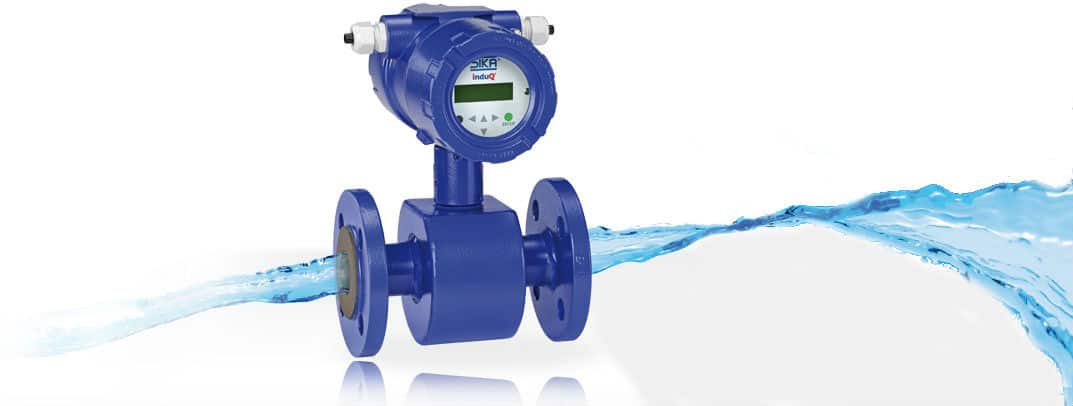A magnetic flow meter is a volumetric flow meter that doesn’t need any moving parts. Perfect for wastewater applications or any dirty liquid which is water-based and conductive. Magnetic flow meters will not work with hydrocarbons, distilled water. Non-conductive and non-aqueous solutions. Magnetic flow meters are also great for applications where low pressure drops. Low maintenance is needed.
Magnetic flowmeters use Faraday’s Law of Electromagnetic Induction. To identify the speed of a liquid flowing in a pipe. Magnetic flowmeters include a nonmagnetic flow tube, linear. Electromagnets and electrodes produce a magnetic field. A magnetic field in magnetic flowmeters is channeled and generated. Into the liquid flowing through the pipe. You can use electromagnetic flowmeters in many products of all kinds of segments.
How can a Magnetic Flow Meter Work?
To channel and generate liquid flow through a pipe. Magnetic flowmeters use a magnetic field. A voltage signal is made when a conductive liquid flows. Through the flowmeter’s magnetic field. The greater the voltage signal generated, the faster the flow of the fluid. Electrode sensors situated on the flow tube walls choose the voltage signal. And send it to the electronic transmitter. That processes the signal to identify a liquid flow.
Magnetic flowmeters estimate the velocity of conductive liquids. In pipes such as acids, slurries, caustic, and water. Magnetic flowmeters do not clog flow, so they can be used for dirty, clean, sanitary. Corrosive, and abrasive liquids. Magnetic flowmeters do not need much upstream and downstream. Straight runs so they can be installed in short meter runs.
Advantages of Electromagnetic Flow Meters:
- Lesser hydraulic loss
- Easy operation
- Ability to work with aggressive materials
- Linear Wide range of working section diameters
- High Accuracy
- Fast Response
- No obstruction is made to flow
- Ability to measure reverse flow
- No extra pressure drops
Installation Guide
The device must be installed first of all, on the straight sections of the pipeline. This is essential to lessen the event of turbulence in the flow. The most ideal distance for such placement is the length. From 5-10 pipe diameters before and after the sensor. A great influence on the measurement process is the correct choice of materials. Inside the pipeline cross-section in calculating areas.
The interior walls are protected with special inserts. To enhance the durability of a flow meter. In operating with an abrasive and aggressive medium. Enamel, fluoroplastic rubber, and similar protective materials. Are used to offer electrical insulation. A set of coils must be set opposite each other. Electrodes should be organized at the same angle. Relative to the magnetic field.
Magnetic flowmeters present particular difficulties for flow rate measurement. These flow meters are only powerful on conductive materials and fluids. Such unmixed gases and hydrocarbons can’t be measured. Yet, magnetic materials themselves may also have some problems. Magnetic flowmeters vary in capacity and size. If you want to identify if magnetic flow meters might be perfect for your application. You can check online and contact flow experts. That will help you choose to find the correct product for your application.



